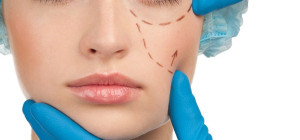Are you battling annoying acne? Acne is a common problem that mostly affects teenagers during puberty due to the change in hormones. However, hormones are not the only cause of acne, and the condition can persist into adulthood.
Therefore, it is not unusual to get acne as an adult. Statistics show that about 60 million Americans are dealing with the condition. Acne can be severe or mild and, although pimples appear similar, acne breakouts are often very different.
Knowing the type of acne you have before seeking potential treatment is essential. First, if acne is left untreated, the pimples can leave scars on your face, resulting in low self-esteem.
Second, understanding the type of acne you have will help you get the appropriate acne treatment. Using the wrong treatment plan for your acne can worsen your acne. Here are the five common types of acne.
Acne Vulgaris
It is a type of acne that comes about due to blocked hair follicles. The hair follicles can be blocked by sebum, bacteria, or dead skin cells. The blocked hair follicles then cause blemishes, includes pimples. Acne Vulgaris is a common type of acne that can occur to a person from any age group.
Acne Vulgaris can be mild or severe, and the pimples appear mostly on the face. However, you can get them on your back, chest, and shoulders.
If it is mild, you will have less than 20 pimples (blackheads or whiteheads). Whiteheads are small pimples with a white center, while blackheads are small pimples with a dark center.
If it is severe, you will have more than 20 pimples and may have widespread blemishes that are large and solid compared to regular pimples.
Treatment
- Benzyl peroxide that targets the bacteria causing acne
- Salicyclic acid that unclogs pores and eases inflammation
- Retinoids which break up pimples and prevent blocked pores
Comedonal Acne
Comedones appear on the chin or the forehead. They appear as small flesh-colored pimples. Some comedones can be microscopic, while some are larger than usual. Comedones feel bumpy when touched and occur due to trapped hair follicles.
Your skin sheds cells on the surface to allow the formation of new skin cells. However, sometimes, the dead skin cells get trapped within hair follicles. The trapped hair follicles then combine with sebum and form a plug that provides a perfect environment for bacteria.
This acne is common among people with oily skin, who consume high amounts of dairy, and smokers.
Treatment
- Spironolactone which helps control sebum production
- Benzoyl peroxide
- Retinoids to break up the whiteheads and blackheads
Hormonal Acne
This form of acne develops due to hormonal changes, especially a rise in androgens – for example, a rise in testosterone.
Increased androgen causes high sebum production, changes from normal skin cell activity, and colonization of hair follicles. Hormonal acne is common in teenagers during puberty.
When you have hormonal acne, you may have lesions on the shoulders, back, neck and chest. However, they most commonly appear on the face since sebum levels are typically higher in that area.
Treatment
- Antibiotics to kill the bacteria causing acne
- Anti-androgen to reduce the production of testosterone
- Birth-control medication to balance hormones
Inflammatory Acne
There are two major categories of acne; inflammatory and non-inflammatory. Inflammatory acne results in red and swollen blemishes. With mild inflammatory acne, you will have minimal red pimples. However, there are severe types of inflammatory acne, such as nodular acne.
It is a common type of acne for everyone – babies, teenagers, and adults. All inflammatory breakouts begin as a tiny blocked pore. While the blockages can be first invisible to the naked eye, it turns out to be a visible pimple.
When the pore gets blocked and sebum keeps pouring in, it forms a suitable environment for bacteria to grow. If untreated, the pore’s pressure accumulates, and the wall breaks, spreading the material on the skin. Thus, resulting in a skin blemish.
Inflammatory acne is characterized by red swollen pimples that can appear in any part of the body. However, the breakouts are common on the face, back and shoulders.
Treatment
- For mild inflammatory acne cases, you can buy OTC medication such as gels containing benzoyl peroxide and salicylic acid.
- Severe cases are quite sensitive, and OTC treatment may not be sufficient; therefore, consult your doctor.
Cystic Acne
This is a type of acne that mostly affects the face, upper arms, and upper torso. Compared to other types of the condition, it is the least common but most severe form of acne.
A common myth is that cystic acne occurs due to greasy foods and poor hygiene – this is false. Cystic acne occurs due to hormonal changes and can be quite painful and distressing.
Treatment
Since cystic acne is uncommon and quite painful, we recommend visiting a specialist before buying any OTC drugs. Besides, most of the medication used to treat cystic acne is tightly controlled and will need a prescription. While a doctor can help manage moderate or mild cystic acne, severe cases require a specialist’s attention.
Having discussed the five acne types, you can now tell which kind of acne you are suffering from. Thus, you can now get an effective treatment plan for your acne. If you have severe acne, we recommend visiting a dermatologist to avoid worsening the condition, which could result in scarring.








